Edge Computing
Benefits of Edge Computing
In a bustling city known for its technological advancements, resided a highly skilled engineer named Adam. Renowned for expertise in computing, Adam consistently sought novel approaches to optimize computer systems. One day, amid conversations among IT experts, a term captured Adam's attention—Edge Computing.
Intrigued, Adam embarked on thorough research to explore the realm of Edge Computing. Discoveries revealed that Edge Computing represented a groundbreaking paradigm shift in data processing and storage. Unlike traditional methods involving remote data centers, Edge Computing enabled data processing to occur at the edge, directly within the originating sources like mobile devices, sensors, and Internet of Things (IoT) devices.
The profound potential of the Edge Computing concept gradually unveiled itself to Adam throughout the research journey. Its utilization promised enhanced application performance and operational efficiency. For instance, within the automotive industry, autonomous vehicles could leverage edge computation to make real-time decisions independently of unstable or limited internet connectivity. Likewise, in healthcare, medical devices connected to Edge Computing networks could deliver swift diagnoses and treatments to patients.
Inspired by these revelations, Adam resolved to integrate the Edge Computing paradigm into personal projects. Diligently designing systems that harnessed edge computation, Adam succeeded in reducing latency and expediting decision-making processes.
Soon, Adam's projects began to captivate attention within both the technology community and industry circles. Recognizing the transformative potential of Edge Computing, Adam received invitations to present pioneering insights at prestigious conferences. Collaborations with prominent enterprises ensued, enabling the implementation of Edge Computing principles in their cutting-edge products.
The phenomenon of Edge Computing swiftly gained traction, evolving into a global trend. From ingenious application developers to tech behemoths, entities across diverse sectors embraced Edge Computing to elevate operational efficiency and empower superior system performance. Adam's journey, characterized by an unwavering pursuit of knowledge and an indomitable spirit of innovation, played an instrumental role in catalyzing this transformative shift.

What Is Edge Computing and Its Advantages for Brands
Edge computing is a concept that enables data processing to be done directly at the source, without the need to send data to a distant data center. In traditional methods, data is sent to a central server for processing, but with edge computing, processing can occur on devices or sensors nearby. This reduces latency or processing time, improves speed, and reduces network load. For example, in autonomous vehicle applications, the use of edge computing allows cars to make fast and real-time decisions without relying on potentially unstable internet connections. In the IoT industry, edge computing enables IoT devices to perform local data analysis, resulting in faster responses and saving network bandwidth.
For companies, edge computing allows for better data security as some processing can be done on the device itself, reducing the risk of data leaks associated with transferring data to a central data center.
Revolutionize Software Development with Edge Computing
Edge computing is revolutionizing the landscape of software development, offering a fresh perspective on application design, development, and optimization.
Traditionally, data processing has been confined to centralized servers or the cloud. However, with the advent of edge computing, software developers can now leverage the processing capabilities at the network edge, closer to the data source. This enables them to unlock unprecedented levels of performance, speed, and efficiency in their applications.
The influence of edge computing extends to software architecture, requiring developers to break down applications into components that can operate at the network edge. These components process data in a distributed manner and seamlessly communicate with central servers or the cloud. This necessitates the use of cutting-edge technologies such as containerization and microservices, enabling the streamlined development and management of edge applications.
Moreover, the security implications of edge computing cannot be overlooked. In edge environments, where devices and resources are distributed, robust security measures are essential to safeguard data and ensure secure communication between components.
In short, the impact of edge computing on software development is profound. It transforms the way applications are conceptualized and constructed. By embracing edge computing in their development strategies, companies can unleash its full potential, elevating performance, reducing latency, and delivering exceptional user experiences.
Data, Data, and Data
Edge computing plays a pivotal role in the decentralization of data processing. Traditionally, data processing and analysis were centralized within large-scale data centers, necessitating the transmission of data from edge devices to these centralized locations. However, with the advent of edge computing, data processing is now distributed closer to the edge devices themselves, enabling localized and distributed processing capabilities.
By bringing computation closer to the data source, edge computing effectively reduces the need for data to traverse long distances, thereby mitigating issues related to latency and network congestion. This decentralization of data processing yields significant advantages. Firstly, it facilitates faster response times and real-time decision-making, crucial for time-sensitive applications such as autonomous vehicles or industrial automation, where immediate actions are imperative. Secondly, it diminishes reliance on a stable and high-bandwidth network connection, thereby enhancing the resilience of systems against network disruptions.
Furthermore, the decentralization of data processing through edge computing augments data privacy and security. By enabling the processing and analysis of sensitive data at the edge devices themselves, the necessity to transmit data to external servers is reduced, consequently mitigating the risks associated with data breaches and unauthorized access. This distributed approach to data processing also facilitates compliance with stringent data protection regulations by minimizing the exposure of sensitive data to external networks.
In summary, edge computing assumes a critical role in the decentralization of data processing by relocating computational tasks closer to the edge devices. This affords faster response times, heightened reliability, bolstered data privacy, and increased adaptability across various industries and applications.

Tons of Benefits to Using Edge Computing for Company
Companies that leverage edge computing can benefit from the following advantages:
Enhanced Responsiveness: By enabling local data processing at the network edge, companies can achieve reduced latency and faster processing times. This translates into highly responsive and real-time decision-making capabilities. For instance, in the automotive industry, edge computing empowers autonomous vehicles to make swift and precise decisions.
Improved Network Efficiency: Edge computing effectively alleviates network load by processing data at the source. This approach minimizes the volume of data transmitted through the central network, resulting in optimized network bandwidth utilization and reduced communication costs. Moreover, edge computing mitigates network congestion and ensures stable network performance.
Strengthened Data Security: With edge computing, sensitive data can be processed locally on edge devices, reducing the risks associated with data transfers to central data centers. This approach enhances data security and privacy, offering companies greater control over their valuable assets.
Scalability and Flexibility: Edge computing empowers companies with scalable and flexible data management capabilities. By enabling data processing at the edge, companies can easily adjust computational resources and expand their edge networks as needed. This scalability fosters adaptability to evolving business requirements and effectively handles surges in data volume.

Photo by cottonbro studio: https://www.pexels.com/photo/woman-using-a-computer-5473298/
BTS.id, Your Partner in Revolutionary Software Development and Edge Computing Solutions!
At BTS.id, we are a leading technology company specializing in software development and cutting-edge edge computing services. With a deep passion for innovation and expertise in both fields, we empower businesses to thrive in the digital age.
Our dedicated team of software developers is committed to delivering tailored solutions that cater to your unique business needs. We understand that every organization requires software applications that are powerful, scalable, and efficient. Through our expertise in software development, we create bespoke applications that streamline operations, enhance productivity, and drive growth.
But that's not all. We go beyond conventional software development by harnessing the power of edge computing. Our edge computing services allow you to unlock the true potential of your data. By processing data directly at the network edge, we help you achieve lightning-fast response times, eliminate latency, and unleash the full power of real-time decision-making.
Are you ready to take your software development and data processing to the next level? Partner with BTS.id and embark on a transformative journey!
HIT US UP
BRIDGE TECHNOLOGY SERVICES


